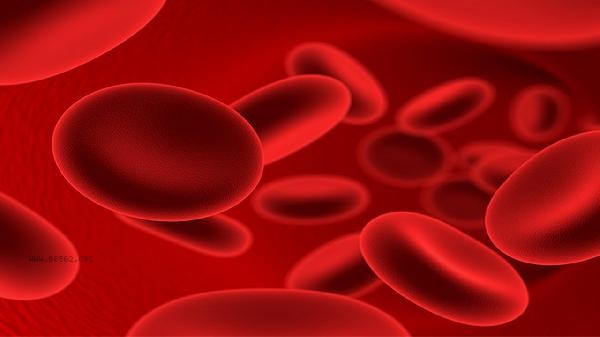A slight increase in the average volume of red blood cells usually does not require excessive concern and may be caused by physiological factors or mild anemia. The main influencing factors include nutritional deficiencies, drinking habits, thyroid dysfunction, myeloproliferative disorders, and drug side effects.

1. Nutritional deficiency:
Insufficient intake of vitamin B12 or folate is a common cause, as these nutrients are involved in red blood cell DNA synthesis. Long term vegetarians and patients with gastrointestinal absorption disorders are prone to developing large cell anemia, characterized by an increase in red blood cell volume but a decrease in quantity. Daily supplementation of relevant nutrients can be achieved by strengthening grains, animal liver, and dark green vegetables.
2. Drinking habits:
Alcohol can interfere with bone marrow hematopoietic function and damage liver metabolic capacity, leading to the release of immature red blood cells into the bloodstream. Long term daily alcohol consumption exceeding 40 grams of ethanol may increase the average volume of red blood cells by 5-10 fL. After quitting alcohol for 4-8 weeks, many indicators can gradually return to normal.
3. Thyroid abnormalities:

Hypothyroidism can reduce bone marrow hematopoietic efficiency and produce larger red blood cells. Patients often experience symptoms such as fear of cold and weight gain, which can be improved through thyroid hormone replacement therapy. hyperthyroidism patients may also experience similar changes due to metabolic hyperactivity.
4. Bone marrow diseases:
Diseases such as myelodysplastic syndrome can lead to impaired maturation of red blood cells and the generation of abnormally enlarged red blood cells. This type of condition is often accompanied by abnormalities in white blood cells or platelets and needs to be diagnosed through bone marrow puncture. Early patients may only show mild elevation in a single indicator.
3. Drug effects:
Antiepileptic drugs such as phenytoin sodium and immunosuppressants such as methotrexate may interfere with cellular metabolic processes. Usually, the indicators can recover within 3 months after discontinuation of medication, and it is recommended to monitor changes in blood routine every quarter during the medication period.

It is recommended to maintain a balanced diet and increase the intake of lean meat, eggs, dairy products, and other foods rich in hematopoietic materials in moderation. Long term smokers should pay attention to the impact of carbon monoxide on red blood cells and can undergo carboxyhemoglobin testing. If the population over 40 years old continues to have abnormalities, the risk of digestive tract tumors should be investigated, and gastroscopy and colonoscopy examinations should be completed if necessary. Pregnant women with abnormal indicators should supplement folic acid three months in advance, with a recommended daily dose of 0.8-1mg. Mild elevation without accompanying symptoms can be rechecked 3-6 months later, and if the fluctuation range exceeds 15% of the normal value, a hematology specialist should be sought.








Comments (0)
Leave a Comment
No comments yet
Be the first to share your thoughts!